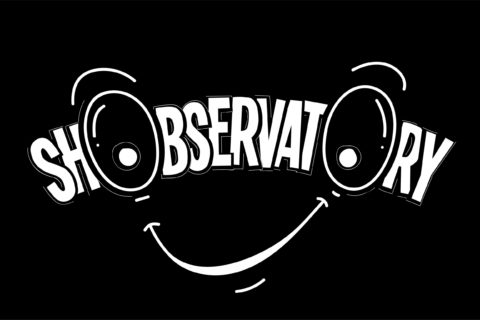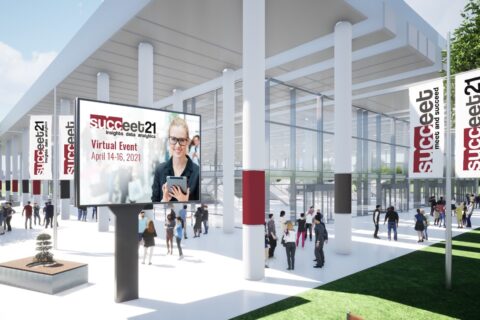Chandan Mukherji, Nestlé’s Vice President & Director, Strategy, Insights and Innovation on the strategic role of insights during the pandemic
We catch up with Chandan Mukherji to talk about why consumer insights have a more strategic role in today’s reality.
What have been the most important changes in consumer behaviour over the past year?
The COVID-19 pandemic created both a demand and supply shock. Looking at the major shifts in consumer behavior, the first has been an accelerated move to online and e-commerce and a higher engagement with digital platforms. There has been an increased trend for consumers to look for value and customer choice, health-conscious behavior has also accelerated with people looking for fitness, well-being and hygiene measures. We also see many consumers wanting more sustainable choices plus a shift towards the home economy as they have to stay at home. People are also thinking a lot about trust and what it means.
Some changes are new and others are existing trends that have accelerated. People’s mental models have also changed as they are thinking more about control as well as how to connect so we need to think about these opportunities.
What were the key challenges in keeping abreast of fast paced change during the pandemic?
The pandemic was unforeseen and it was important to understand things in real time because things were changing so quickly. With the sudden lockdown it was a big challenge from a consumer insights perspective to get a real time understanding of events and to think more proactively about how things would unfold over time.
This led to a range of challenges from the research side in being able to identify, collect and analyze data which was meaningful to help us understand what was happening in a very granular manner, what consumers were looking for and what was on their minds as the pandemic spread.
To mitigate the risks to business continuity, we wanted to be able to predict what would happen next, which meant recognizing which factors and variables we should look at in trying to understand the changes. We studied behavior looking at consumer tensions and the trade-offs people were making, their motivations and compulsions, and some of the contradictions and reactions to the changes.
What have been the most important shifts in how you do research over the past year?
Some quick changes were needed. There has been a big shift online to using tech platforms to follow social media conversations and search data to understand consumer reactions, and to mine data in a more specific way to glean insights on a real-time basis.
Face-to-face research is still important for us to get a good understanding of consumers in many situations and to probe elements such as product experience but these approaches were often hampered so we had to postpone projects and switch to different approaches. Some types of tracking were also affected with data collection challenges in some markets.
The more traditional techniques and observational and ethnographical areas were hindered because they rely on understandings things in the moment and the context of real-life circumstances. We quickly pivoted to more technology-led approaches using online platforms as well as monitoring digital streams to make sense of the data.
In some cases, we jumped into online immersions and talked with consumers to understand what they were thinking about. We did a lot into remote research to figure out some of the contextual aspects of what people were doing, how they were doing it and why. We also looked at social media and search data to see what was going up or down, what people were searching for with intent to buy, and what were they considering and thinking about. We would have done this kind of mix in normal circumstances but the whole intensity was heightened.
Some clients say they were already heading in this direction and the pandemic just accelerated the move especially into big data and analytics. Would that be true for you?
Big data and analytics are very important for understanding consumers which is central to everything we do. In addition to the demand and supply shock, there was also a data shock and some of the data lakes and data streams including big data were hampered. The changes highlighted that there is a lot more to be harnessed from analytics and where we need to be sharper about understanding people at both the conscious and subconscious levels. We will need to be more ambitious about how we fuse and connect the data and be more agile and go deeper to understand the why behind the data which needs to be looked at more holistically.
Face-to-face contact and ethnographical and observational approaches are still very valuable for understanding. Face-to-face continues to be one of the most relevant ways to access consumers in emerging markets so we can find and connect with representative samples within the very different social economic classes. This will remain relevant even whilst the digital and technology push is driving us to think of new ways of obtaining data. Some of the big data and analytics data needs to be fused with some of the small data, so face-to-face quantitative and qualitative and other kinds of methods will remain important.
Given that recovery will be uneven, how are you planning to understand where there is growing consumer confidence and how that will impact behaviour?
There are the usual techniques but we are also using a lot more macro-economic data, lead indicators, data on fiscal stimulus, inflation, data about the pandemic and whether regions are in a second or third wave and the different interpretations of that, looking at this at the micro, local and domestic level. A lead indicator approach helps us understand what’s going on and the likely implications going forward. This means looking at consumer confidence, sentiment and mindset and fusing this with other micro and macro data to form a more holistic picture to help us model the opportunities at both the micro and macro level.
What do you see as the key opportunities regarding consumer insights?
I view insights as a tree structure where at the base we can be a data and research partner with the different teams in the company, moving to the next level as an knowledge and insights partner, and then at the top as a branding and business partner which eventually means we are able to lead the conversation and bring in the added value of consumer understanding, insights and foresight.
We have moved a long way from the research to an insights function, and now there is a need to be more strategic in understanding the what, so what and what next. This provides an accelerated opportunity to move into the strategic foresight area where we bring in a more predictive capability, and apply the power of machines to the power of human understanding.
A data and research partner provides the right data with the right methods, a knowledge and insight partner is about connecting the different pieces to move from data to real understanding, and finally a business partner means joining hands with the rest of the organization to look at the entire value chain from end to end to understand how to connect everything holistically to move in the direction where we add purpose and value to the business and people’s lives. We need to help and upgrade each other to see how we can continuously move in that direction.
Have consumer insights taken a more central role because of the ongoing changes?
The need to understand human beings, the context of consumers, customers and the categories in which we operate has never been more critical. From a wider perspective, consumer understanding is a key source of competitive advantage alongside the cost of capital and access to technology. The cost of capital is going down and technology is more accessible, so one of the differentiating factors is looking at the entire value chain. For that you need deep consumer-centricity and understanding consumers is central to what we do.
There are opportunities to drive consumer understanding in a deeper, more agile way that is more personalized, the same direction in which marketing is heading, to understand consumers more specifically, albeit with all the privacy protections. To get that understanding to play a strategic role will be a key differentiator for competitive advantage in the future. I believe we have an important role to play and we continue to push our own boundaries. It really is about how well you understand consumers and join everything up through the value chain to delight customers. Creating rewarding and outstanding experiences will depend on consumer foresight and insight.
It has been a continuous journey in terms of getting insights professionals a seat at the table and it’s up to us to bring value in connecting the dots to show the consumer picture. Sometimes other functions look at this from a siloed manner so we have a wider perspective. We must bring in more provocation and predictive capabilities and the ability to think more widely, deeply and strategically. We need to reflect on how we can be more forward looking and incisive and whether we bring our deep understanding alive in the right way. We need to move away from being project focused towards being more partner focused and bring in more stories rather than data heavy approaches. There is no point in having a lot of data if it’s not voiced well and stays in the back room.
We need to move this knowledge more to the front to drive the agenda of the organization in terms of consumer-centricity. Getting this understanding and the holistic picture at an individual, macro or segmented level is critical. Being able to have a sharp understanding in the time and form that really matters will separate the winners from the losers to drive organizational goals.
Do you also have to be more critical about your research partners to be able to deliver in these more exacting conditions?
I believe in working with our partners in a very joined up manner so we push each other, not just in classical areas around methodology or techniques, but also about how we connect and interpret the information to elevate our understanding. It’s a joint effort – this is not something that we or our partners can do alone. We will need more specialist partners for a deeper understanding of certain areas, also focusing on the business context. We must work together to connect the two. We have to push our partners but also support them to craft the agenda.
We are moving more into the data analytics area, and whether this is getting the right data lakes, or the right types of data, we must be able to process this data in an agile way that highlights the key indicators at the appropriate moment to make a decision. This means looking at the right metrics and joining them with other information to get a deeper and sharper understanding of consumers and making this more business connected.
The whole thrust is about upgrading and deepening our skills and competencies to understand how we can move from being a data and research partner to a knowledge and insights partner to a brand and business building partner.


